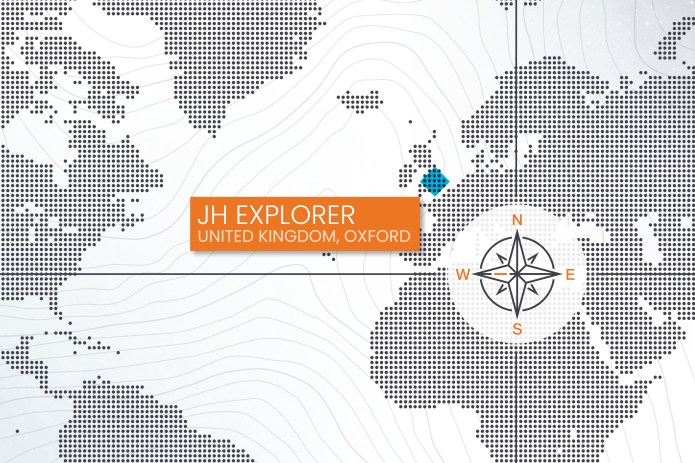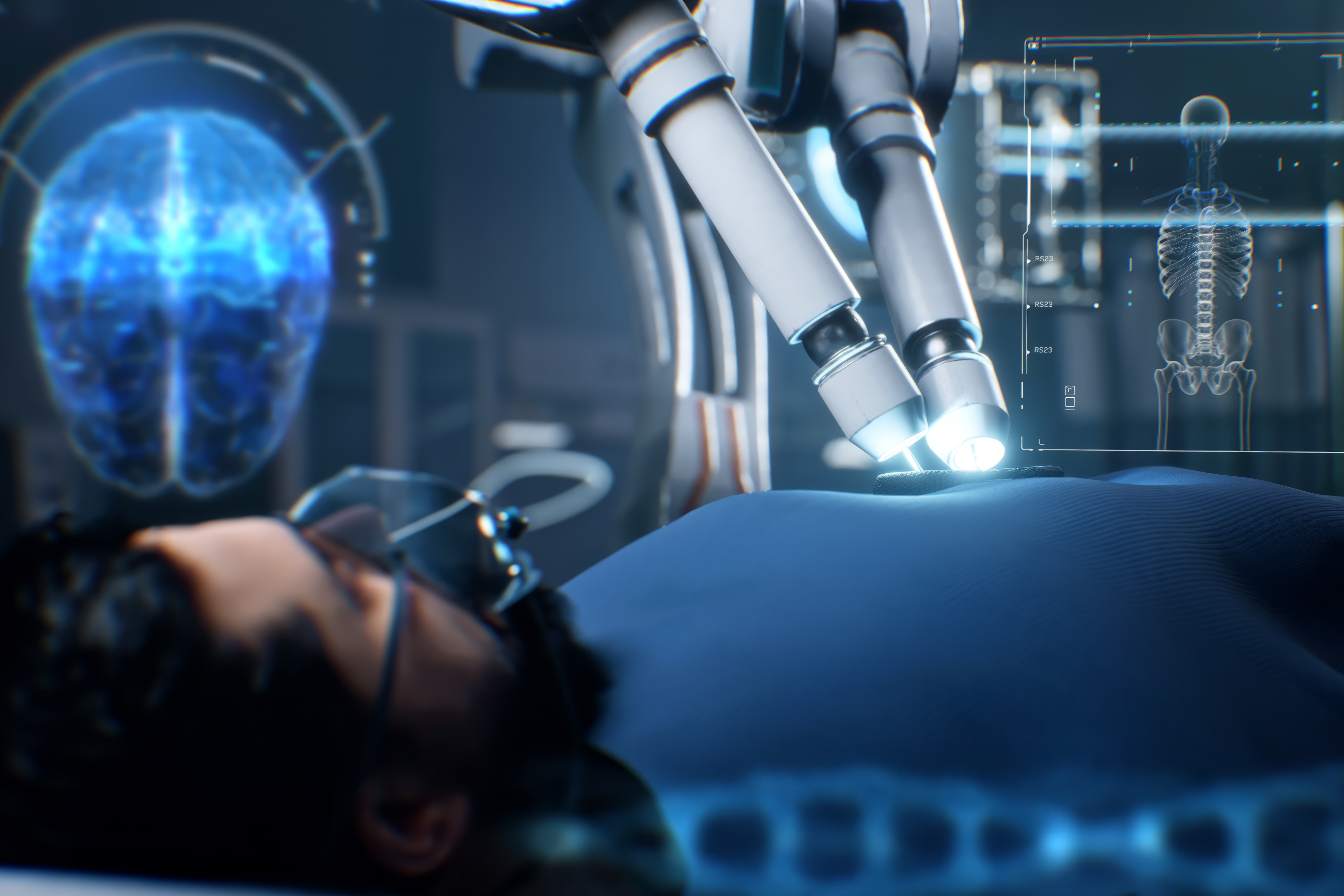
A leader in robotic-assisted surgery
Intuitive Surgical (ISRG) has been a dominant player for many years in the highly innovative area of robot-assisted medical procedures. ISRG aims to enhance patient and surgeon outcomes, educate the surgical community and is an advocate for improved healthcare outcomes and access – therefore it maps to our health tech theme. With poverty and inequality rising as a result of an expanding and ageing population, these challenges require technological innovation like ISRG’s, employing artificial intelligence (AI) and data analytics to enable access to quality healthcare, improved outcomes, and improving safety and quality of life.
Great example of ‘technology for good’ in health tech
Da Vinci is a robotic arm system, controlled by the surgeon using a console, with multiple instruments, accessories and add-ons like staplers, as well as extensive software. The surgical system works by bringing together computational, robotic, and imaging technologies, showcasing how technology can be used for good. During a visit to ISRG’s facility in Oxford, I was able to trial the Da Vinci Xi and Si systems. I was pleasantly surprised by its smooth navigation, how sensitive and responsive it was, and the incredible response time. It was easy to understand how the robot would cause less trauma to the body while operating compared to a surgeon’s hands. Via the training console the instructor could draw, point and write on the screen, with enhanced vision and audio making it easy for surgeons to learn from best-in-class peers to enhance and improve their skills. I was also shown the new ION diagnostics tool, which showcased ISRG’s ability to expand beyond surgical equipment. This technology is minimally invasive and can detect cancer much earlier.

On this visit I wasn’t shown the latest and most advanced Da Vinci 5 system, but the team is very excited about its capabilities and potential. With 10,000 times the compute power of the previous system, Da Vinci 5 will continue to evolve with more software, more AI and machine learning in surgery. The new system includes ‘force feedback’ technology, providing the ability to measure and sense the push and pull forces at the instrument tip. This can help reduce tissue trauma, with surgeons noting up to 43% less force on tissue. Da Vinci 5 also has the most realistic 3D imaging, with four times more pixels, better colour and resolution. This is a huge leap for robotic surgery enabled by technology.
We think ISRG is a true technology robotics company, and in the long term, could provide many insights for improving surgery, enabling the skills of the best surgeons in the world to be passed on.
Improving sustainability case
My visit also complemented and informed the team’s analysis of ISRG’s sustainability credentials. We think the company is strong on social and governance factors, including its product quality, innovation, extensive network, analytics and training ecosystem, which builds out the competitive moat, supported by a strong management team.
The largest environmental footprint can be found in ISRG’s supply chain, where we encourage more stewardship. Within design and manufacturing, the most material environmental factors are found in the equipment use phase – single-use plastics, single/multi-use instruments (that need to be replaced) and sterilisation chemicals, as well as end of life waste management.
While we see this as an area for improvement, there is positive momentum through initiatives such as the “Extended Use Program” and their announcement of a future climate transition plan. As active managers, we can engage with management on these areas.
Overall, I returned from my visit enthused by the developments in robotic surgery and diagnostics, and it also reinforced our team’s views on ISRG’s competitive advantages. While improvements are needed in terms of disclosures and its environmental focus, we gained a better idea of ISRG’s ESG footprint, sustainable impact and improving sustainability case.
Queste sono le opinioni dell'autore al momento della pubblicazione e possono differire da quelle di altri individui/team di Janus Henderson Investors. I riferimenti a singoli titoli non costituiscono una raccomandazione all'acquisto, alla vendita o alla detenzione di un titolo, di una strategia d'investimento o di un settore di mercato e non devono essere considerati redditizi. Janus Henderson Investors, le sue affiliate o i suoi dipendenti possono avere un’esposizione nei titoli citati.
Le performance passate non sono indicative dei rendimenti futuri. Tutti i dati dei rendimenti includono sia il reddito che le plusvalenze o le eventuali perdite ma sono al lordo dei costi delle commissioni dovuti al momento dell'emissione.
Le informazioni contenute in questo articolo non devono essere intese come una guida all'investimento.
Non vi è alcuna garanzia che le tendenze passate continuino o che le previsioni si realizzino.
Comunicazione di Marketing.
Important information
Please read the following important information regarding funds related to this article.
- Le Azioni/Quote possono perdere valore rapidamente e di norma implicano rischi più elevati rispetto alle obbligazioni o agli strumenti del mercato monetario. Di conseguenza il valore del proprio investimento potrebbe diminuire.
- Le azioni di società a piccola e media capitalizzazione possono presentare una maggiore volatilità rispetto a quelle di società più ampie e talvolta può essere difficile valutare o vendere tali azioni al momento e al prezzo desiderati, il che aumenta il rischio di perdite.
- Un Fondo che presenta un’esposizione elevata a un determinato paese o regione geografica comporta un livello maggiore di rischio rispetto a un Fondo più diversificato.
- Il Fondo si concentra su determinati settori o temi d’investimento e potrebbe risentire pesantemente di fattori quali eventuali variazioni ai regolamenti governativi, una maggiore competizione nei prezzi, progressi tecnologici ed altri eventi negativi.
- Il Fondo si attiene a un approccio d’investimento sostenibile, il che potrebbe condurlo ad essere sovrappesato e/o sottopesato in alcuni settori e pertanto ad ottenere performance diverse da quelli di fondi con obiettivi analoghi, ma che non si avvalgono di criteri d’investimento sostenibile per la selezione dei titoli.
- Il Fondo potrebbe usare derivati al fine di ridurre il rischio o gestire il portafoglio in modo più efficiente. Ciò, tuttavia, comporta rischi aggiuntivi, in particolare il rischio che la controparte del derivato non adempia ai suoi obblighi contrattuali.
- Qualora il Fondo detenga attività in valute diverse da quella di base del Fondo o l'investitore detenga azioni o quote in un'altra valuta (a meno che non siano "coperte"), il valore dell'investimento potrebbe subire le oscillazioni del tasso di cambio.
- Se il Fondo, o una sua classe di azioni con copertura, intende attenuare le fluttuazioni del tasso di cambio tra una valuta e la valuta di base, la stessa strategia di copertura potrebbe generare un effetto positivo o negativo sul valore del Fondo, a causa delle differenze di tasso d’interesse a breve termine tra le due valute.
- I titoli del Fondo potrebbero diventare difficili da valutare o da vendere al prezzo e con le tempistiche desiderati, specie in condizioni di mercato estreme con il prezzo delle attività in calo, aumentando il rischio di perdite sull'investimento.
- Il Fondo potrebbe perdere denaro se una controparte con la quale il Fondo effettua scambi non fosse più intenzionata ad adempiere ai propri obblighi, o a causa di un errore o di un ritardo nei processi operativi o di una negligenza di un fornitore terzo.
